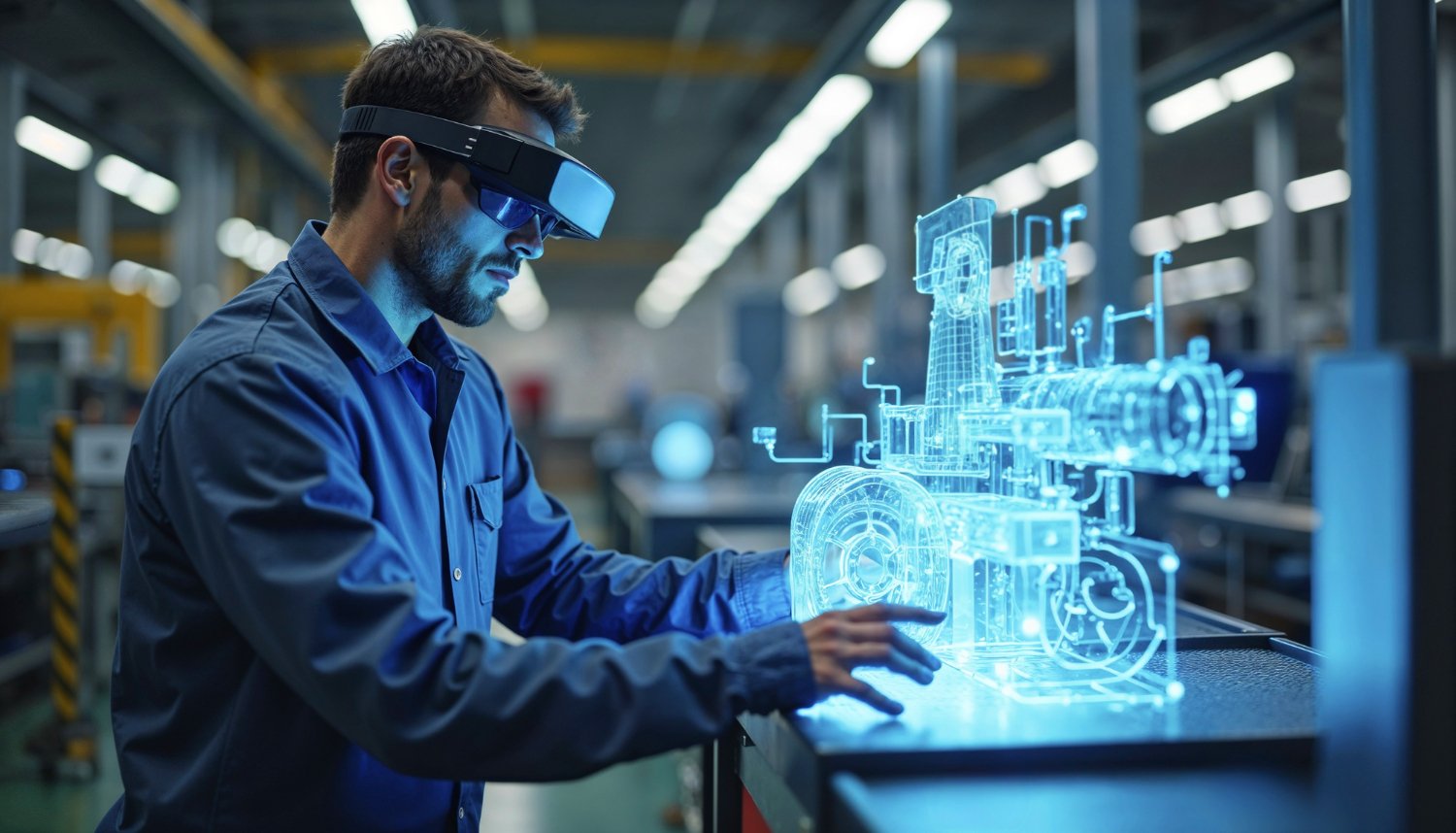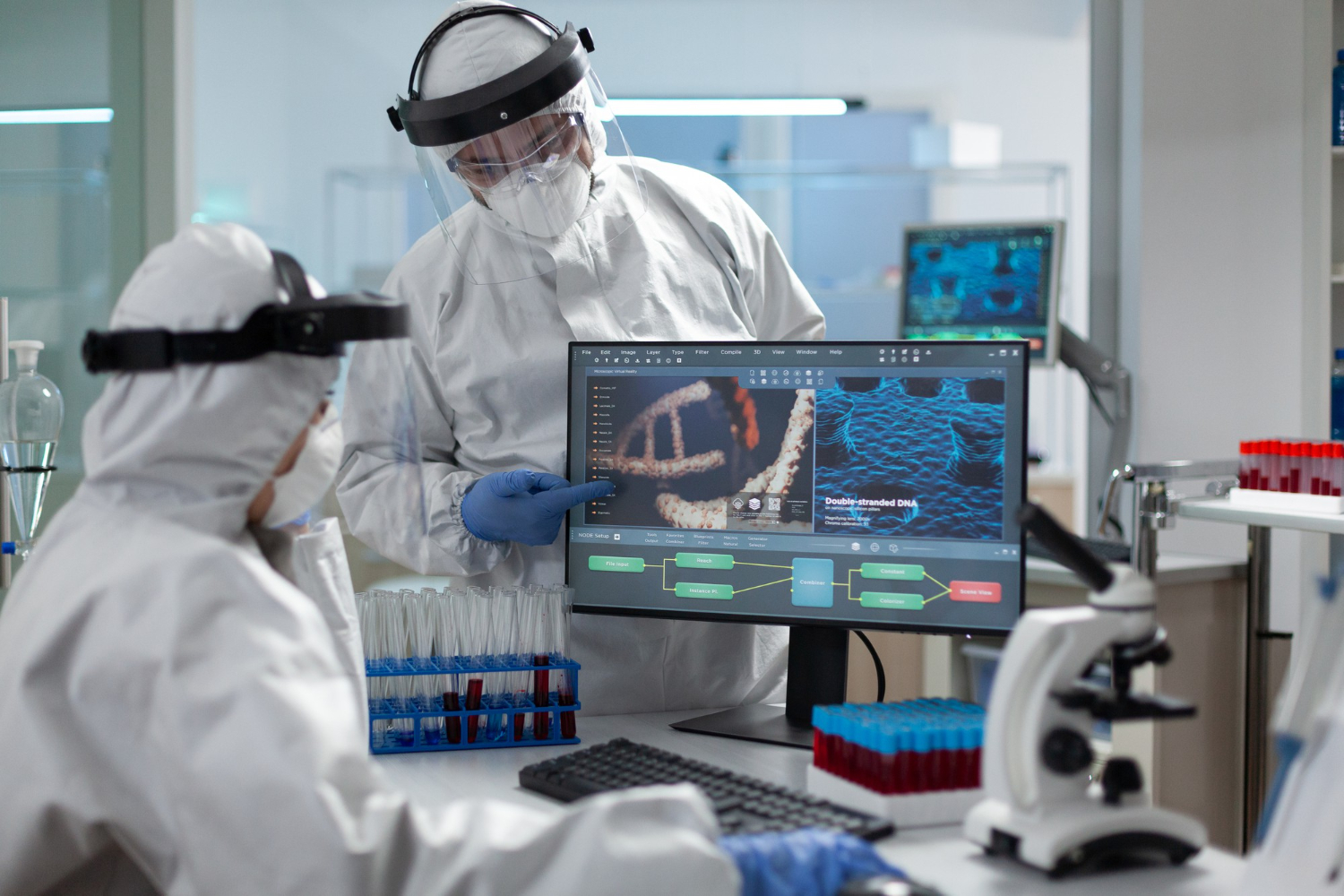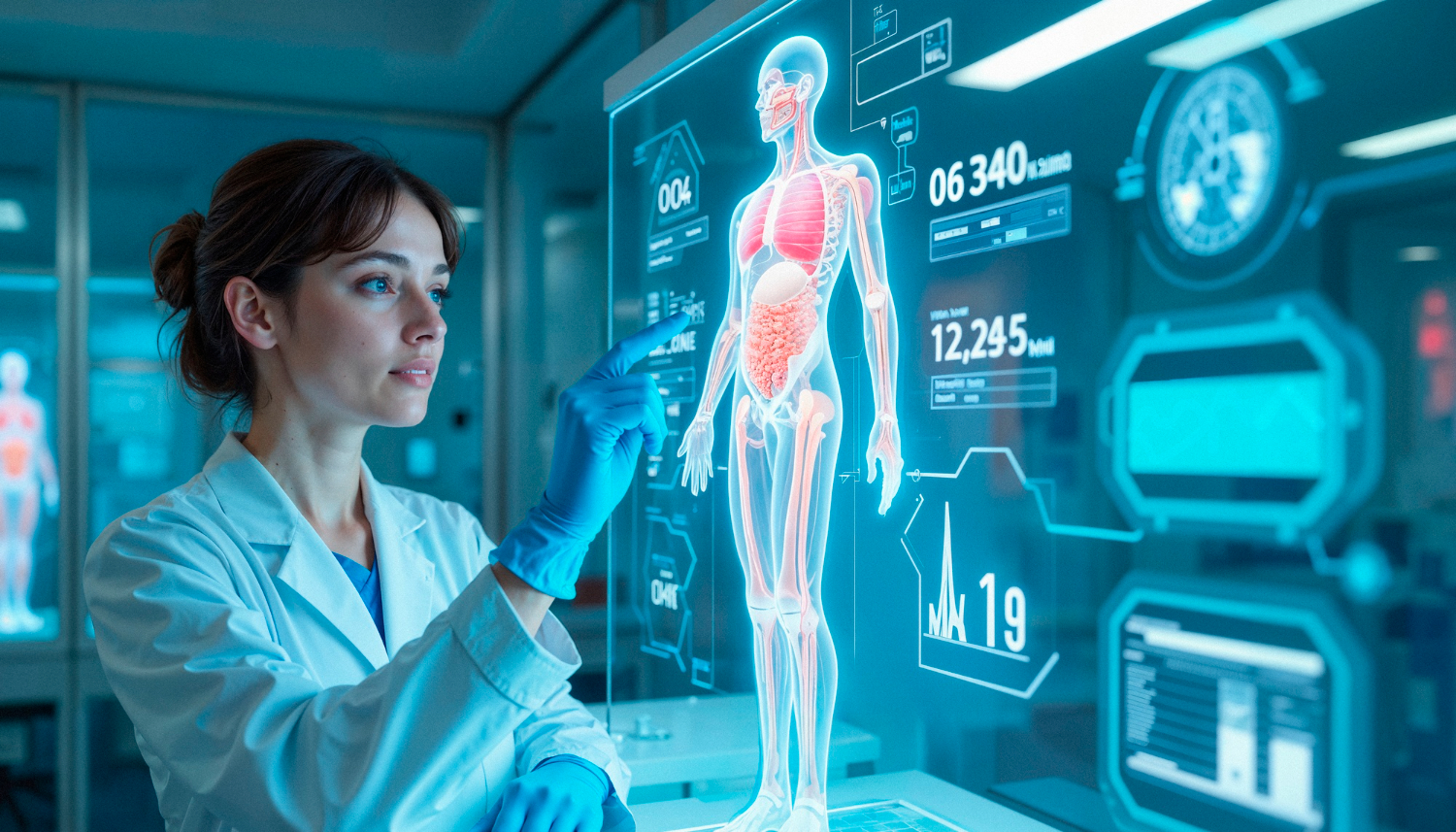Virtual reality is no longer limited to gaming or entertainment. Today, it plays a growing role in industries like healthcare, education, and especially manufacturing. Companies across the United States and beyond are adopting VR systems to improve efficiency, safety, and productivity in their manufacturing process.
In factories where goods on a large scale are produced, precision and planning are critical. From handling raw materials to delivering finished goods, every step must run smoothly. This is where virtual reality makes a difference.
How Virtual Reality Supports Manufacturing
VR applications help simulate complex production environments. Workers can interact with digital versions of machines and assembly setups before touching real equipment. When users wear head-mounted displays, they enter a 3D world where they can practise tasks, spot design flaws, or adjust workflows without stopping the actual production process.
This is valuable for advanced manufacturing, where mistakes can be costly. Instead of testing changes on the assembly line, engineers use VR systems to model different scenarios. This reduces downtime and prevents waste of raw materials.
Improving Training and Safety
In the manufacturing industry, training new staff is challenging. Manufacturing jobs often involve heavy machinery, sharp tools, and fast-moving parts. Mistakes can lead to injuries or damaged products.
With virtual reality, trainees experience real-world situations in a safe environment. They can learn how to operate machines or respond to emergencies without any risk. Motor Corporation and other major manufacturers already use VR for this purpose.
This approach not only improves safety but also speeds up learning. Employees trained through VR applications often gain confidence faster, making them ready for the assembly line sooner.
Read more: Automating Assembly Lines with Computer Vision
Streamlining the Production Process
One key benefit of virtual reality is how it supports lean manufacturing. This method focuses on reducing waste and increasing efficiency. By using VR systems, companies can simulate their entire manufacturing process in real time.
Engineers can identify bottlenecks, test new layouts, or adjust workflows before implementing them on-site. This helps in producing goods on a large scale without delays or unnecessary costs.
For example, before installing new equipment, a factory can visualise how it fits into the existing production process. Any potential issues become clear in the virtual space, allowing teams to fix them early.
Design and Prototyping with VR
In advanced manufacturing, design plays a crucial role. Whether developing a new car model for a motor corporation or creating components for 3D printing, accuracy is vital.
VR applications enable designers to interact with 3D prototypes. Instead of viewing models on a flat screen, they can walk around them, inspect details, and make changes in real time. This shortens the design cycle and leads to better products.
For industries where finished goods need to meet strict standards, this ability to refine designs early is a major advantage.
Read more: Computer Vision for Quality Control in Manufacturing
The Role of VR in Maintenance and Repairs
Maintaining machinery is critical in any manufacturing setting. Downtime affects productivity, especially when goods on a large scale are mass-produced.
With virtual reality, technicians can rehearse repair procedures before working on actual equipment. Some VR systems even provide guided support, overlaying instructions as workers perform tasks. This reduces errors and speeds up maintenance.
Enhancing Collaboration Across Teams
Modern manufacturing often involves teams spread across different locations. Designers, engineers, and managers may need to collaborate on projects without being physically present in the same factory.
VR applications offer virtual meeting spaces where teams can review designs, inspect virtual assembly setups, and make joint decisions. This improves communication and ensures everyone stays aligned throughout the manufacturing process.
Impact on Lean Manufacturing Strategies
Lean manufacturing aims to create more value with fewer resources. Virtual reality supports this by offering insights into how production flows. Companies can simulate entire workflows, test different setups, and find ways to minimise waste.
By applying VR systems in planning stages, manufacturers avoid costly adjustments later. This is particularly useful in industries where mass produced items require tight coordination between machines, people, and supply chains.
VR in 3D Printing and Custom Manufacturing
The rise of 3D printing has changed how manufacturers approach production. Instead of relying solely on goods on a large scale, companies now offer customised solutions.
Virtual reality complements 3D printing by allowing designers and clients to visualise products before they are printed. This ensures accuracy and customer satisfaction.
In advanced manufacturing, where bespoke parts are common, this combination of VR applications and 3D printing speeds up approval processes and reduces errors.
Read more: AI in Manufacturing: Transforming Operations
VR in Quality Control and Product Testing
Quality control is a vital part of the manufacturing process. Ensuring that finished goods meet high standards is key to customer satisfaction and reducing waste. Virtual reality is now being used to improve how manufacturers handle quality checks and product testing.
Traditionally, quality control involves inspecting physical products on the assembly line. This process can be time-consuming and may not catch every issue, especially in complex production environments. VR applications provide a new approach by allowing manufacturers to test digital prototypes before they reach the production stage.
With VR systems, companies can create detailed virtual models of products. These models include every component and assembly detail. Users wear head mounted displays to examine these virtual products from every angle.
This helps identify design flaws or potential issues before any raw materials are used. By spotting problems early, manufacturers can avoid costly mistakes and reduce the number of defective goods on a large scale.
In advanced manufacturing, VR is also used to simulate stress tests and performance checks. For example, a motor corporation might use VR to test how a vehicle component behaves under different conditions. Instead of building multiple physical prototypes, engineers can run simulations in a virtual environment. This speeds up the development cycle and cuts down on material costs.
VR supports lean manufacturing by minimising waste throughout the production process. Since potential defects are identified during the virtual phase, fewer resources are wasted on rework or scrapped products. This approach aligns with modern manufacturing goals of efficiency and sustainability.
Real time feedback is another advantage of VR in quality control. As users interact with digital prototypes, the system can highlight areas that do not meet specifications. This immediate response allows teams to adjust designs or processes without delay. It also improves communication between departments, as everyone can see and understand the same virtual model.
VR systems are also useful for training staff in quality control procedures. New employees can practice inspecting virtual products, learning how to spot defects without needing access to the actual assembly line. This reduces downtime and ensures that workers are fully prepared when they begin inspecting finished goods in a real environment.
In industries where precision is critical, such as aerospace or medical device manufacturing, VR applications provide an extra layer of assurance. Virtual inspections can be repeated as many times as needed, helping companies maintain strict quality standards.
As more manufacturers adopt VR for quality control and product testing, the benefits become clear. Faster detection of issues, reduced waste, and improved training all contribute to better products and more efficient production processes. Virtual reality is proving to be a valuable tool in maintaining high standards across the manufacturing industry.
Adoption of VR in the United States Manufacturing Industry
Across the United States, more companies are integrating VR systems into their operations. From automotive giants like motor corporations to small factories, the benefits are clear.
The use of head-mounted displays is becoming standard in training rooms and design labs. As VR applications become more affordable, even midsized businesses are starting to adopt them.
This shift supports job growth by creating safer, more efficient manufacturing jobs. Workers gain access to modern tools that make their roles easier and more productive.
Read more: Top Virtual Reality Use Cases and Examples
Overcoming Challenges in VR Adoption
While virtual reality offers many advantages, some challenges remain. The initial cost of setting up VR systems can be high, especially for smaller companies. There’s also a need for staff to adapt to new technology, which may require additional training.
However, as the technology matures, costs are decreasing. Many companies find that the long-term savings in efficiency, safety, and reduced waste outweigh the initial investment.
VR for Collaboration and Remote Operations in Manufacturing
Virtual reality is changing how teams collaborate in the manufacturing industry. Traditional methods often require teams to be physically present on-site. This can lead to delays, higher costs, and limited flexibility. VR systems offer a solution by allowing teams to work together in a shared virtual space, no matter where they are located.
With VR applications, engineers, designers, and production managers can interact with digital models of products or machinery in real time. Users wear head mounted displays to enter a virtual workspace where they can review designs, suggest modifications, and simulate production processes. This improves communication and reduces misunderstandings that often happen when working with 2D drawings or static images.
For example, a motor corporation designing a new vehicle can use VR to bring together teams from different countries. They can walk through the assembly line setup, inspect parts, and adjust the layout without travelling. This saves time and reduces expenses linked to business trips and physical prototypes.
In addition, VR supports remote maintenance and troubleshooting. Experts can guide on-site workers through repairs or adjustments using shared virtual environments. This is especially useful in advanced manufacturing facilities where complex machinery requires specialist knowledge. Instead of flying an expert to the site, companies can use VR systems to provide immediate support.
VR also plays a role in supply chain management. Teams can visualise the flow of raw materials through the production process and identify potential bottlenecks. By simulating different scenarios, manufacturers can improve efficiency and ensure that goods on a large scale are produced without delays.
Another benefit is in managing health and safety. Virtual reality allows companies to train employees on safety procedures in a controlled setting. Workers can experience hazardous situations in VR without any risk, preparing them for real-world challenges on the factory floor.
The combination of real time collaboration, remote operations, and effective training makes VR a valuable tool in modern manufacturing. As VR technologies continue to improve, more companies will adopt these systems to stay competitive and efficient in a global market.
Integrating Virtual Reality into Quality Control and Inspection
Quality control is a critical aspect of the manufacturing process, ensuring that products meet specified standards before reaching the consumer. Traditional inspection methods often involve manual checks, which can be time-consuming and prone to human error. By incorporating virtual reality (VR) technologies, manufacturers can enhance the accuracy and efficiency of quality assessments.
Using VR systems, inspectors can simulate the inspection process in a controlled virtual environment. This allows for the identification of defects or inconsistencies in products without the need for physical prototypes. For instance, a manufacturer can create a virtual model of a product and use VR applications to examine it from various angles, checking for flaws that might not be visible through traditional methods.
Moreover, VR can facilitate remote inspections, enabling quality control teams to assess products from different locations. This is particularly beneficial for multinational companies with manufacturing plants spread across various regions. By adopting VR technologies, these companies can maintain consistent quality standards across all their facilities.
In addition to product inspection, VR can also be used to train quality control personnel. Through immersive simulations, trainees can learn to identify defects and understand inspection protocols in a risk-free environment. This method of training can lead to a more skilled workforce, capable of maintaining high-quality standards in the manufacturing industry.
Integrating VR into quality control processes not only improves the accuracy of inspections but also reduces the time and resources required for product assessments. As the manufacturing industry continues to evolve, the adoption of VR technologies in quality control is poised to become a standard practice, ensuring that products meet the highest standards before reaching the market.
Read more: Virtual Reality Evolution: From Science Fiction to Real Life
Future of VR Applications in Manufacturing
The future looks promising for VR applications in manufacturing. As systems become more advanced, we can expect even greater integration with other technologies like AI and IoT.
Real-time data from machines could feed directly into VR systems, giving operators a live view of the production process. This would allow for instant adjustments and better decision-making.
We may also see virtual reality playing a larger role in areas like supply chain management, where visualising logistics helps streamline operations.
Another promising area is the use of digital twins. These are virtual models that mirror physical systems. In manufacturing, digital twins allow teams to test changes in a virtual space before applying them on the factory floor. This approach helps in predicting outcomes and avoiding costly mistakes.
For example, a motor corporation might use a digital twin to simulate a new assembly line layout. By doing so, they can identify potential issues and optimise the production process without interrupting actual operations. This method supports lean manufacturing by reducing waste and improving efficiency.
In addition, VR systems are being integrated with 3D printing technologies. Designers can visualise and adjust models in real time, ensuring that the final finished goods meet quality standards. This integration streamlines the manufacturing process and reduces the need for multiple prototypes.
Moreover, VR applications are enhancing manufacturing jobs by providing immersive training experiences. Workers can practise tasks in a virtual environment, gaining confidence and skills before working with actual equipment. This approach improves safety and productivity on the assembly line.
As virtual reality continues to evolve, its applications in manufacturing are expanding. From design and training to maintenance and production, VR systems are becoming essential tools in the industry. Companies adopting these technologies are better positioned to meet the demands of modern manufacturing.
Read more: Mixed Reality - The Integration of VR, AR, and XR
How TechnoLynx Can Help
At TechnoLynx, we specialise in developing tailored VR applications for the manufacturing industry. We understand the challenges companies face, from optimising the assembly line to improving lean manufacturing strategies.
Our team designs VR systems that integrate smoothly with your existing processes. Whether you’re looking to enhance training, streamline your production process, or improve collaboration, we can provide solutions that deliver real value.
We help businesses across the United States adopt virtual reality in ways that boost efficiency, reduce costs, and support growth. With experience in advanced manufacturing, 3D printing, and real-time process simulation, TechnoLynx is your partner in modernising your operations.
Contact us today to learn how we can bring virtual reality to your manufacturing process and keep you ahead in a competitive market.
Image credits: Freepik













